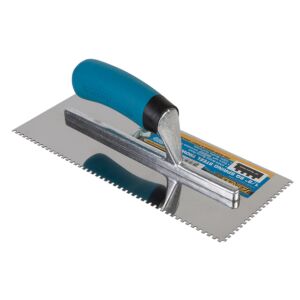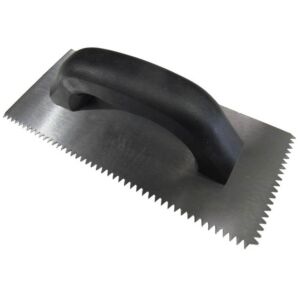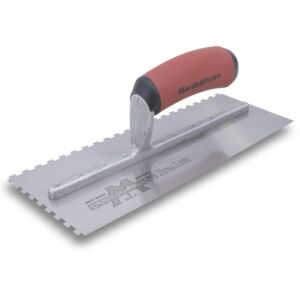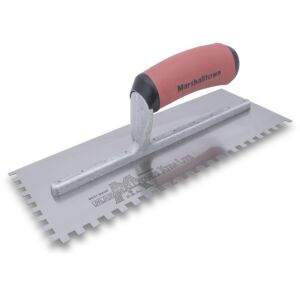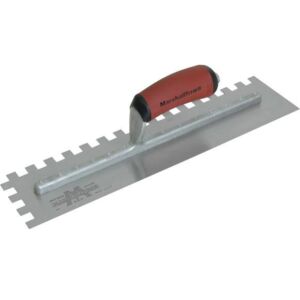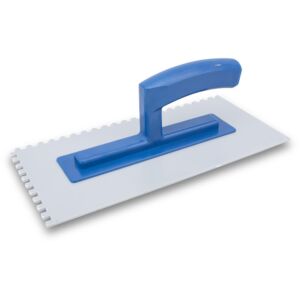Trowels are available in standard steel, stainless steel and plastic, with wood, plastic or rubberized handles. They all will get the job done, but the stainless steel trowels with wood or ergonomic handles are the most comfortable to use, last the longest and, naturally, the most expensive.
Finishing and pool trowels are for spreading and finishing cement to a smooth finish. These are flat edged trowels, either rectangular or shaped like an arched doorway (pool trowels) and are available in a variety of sizes and shapes.
Notched trowels create a bead/rib pattern in the thinset or adhesive. The shape, depth and spacing of this pattern allows consistent and appropriate coverage for the tile you are laying. The right bead will ensure the tile is properly supported and adheres to the backerboard or other substrate. Uneven contact will cause tiles to crack or become loose. Generally speaking, the larger/more uneven the back surface of the tile, the more setting material required to create the optimum bond.
Square Notch Trowels
These trowels have square or rectangular notches, and give good contact, up to 50% or more before beating in. They are generally used with sanded thinset which do not compress as much during the beating in of the tile. For non-cupped tiles up 12 x 12, on a flat substrate, a 1/4" x 1/4" square notch trowel is standard.
U-Notch Trowels
Similar to square notch, but lays down more thinset and spreads a bit easier. Beating in the tile is easier than with a square bead.
V-Notch Trowels
Great for unsanded adhesives such as mastic. The v-notch compresses the mastic when tile is beaten in, to create the optimum bond. V-notch trowels create a rib pattern that offers very little contact until tile is beaten in.



